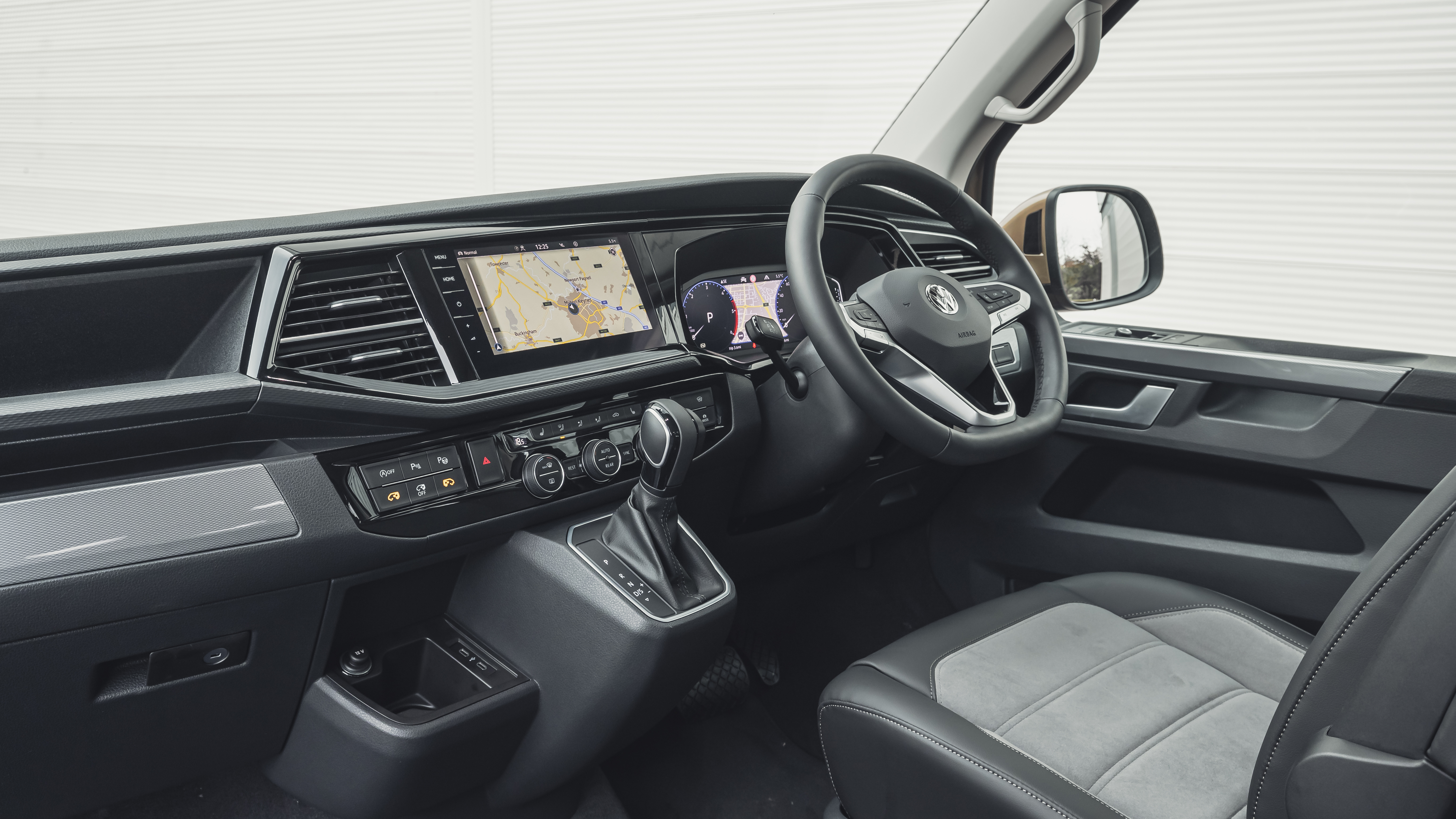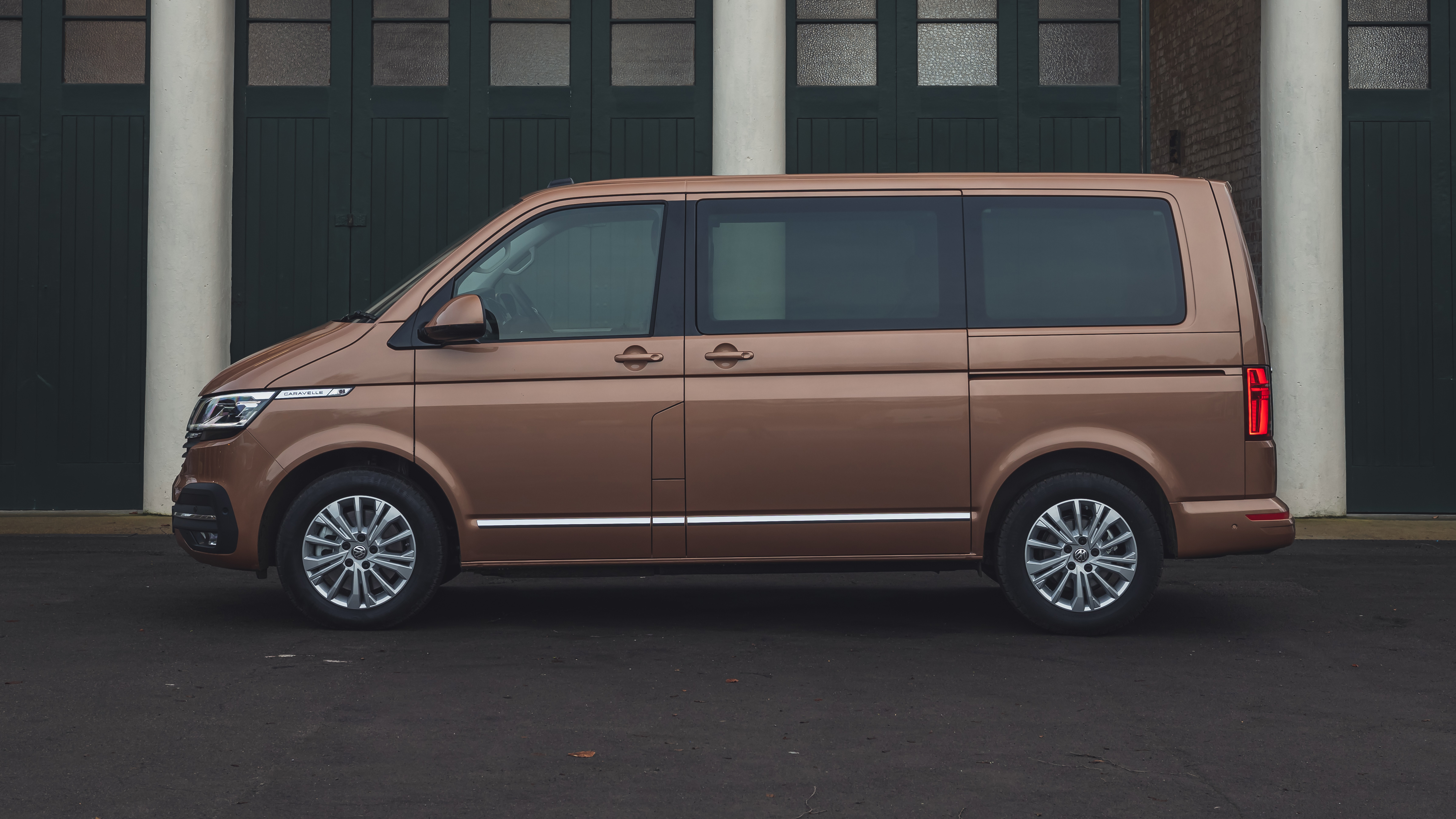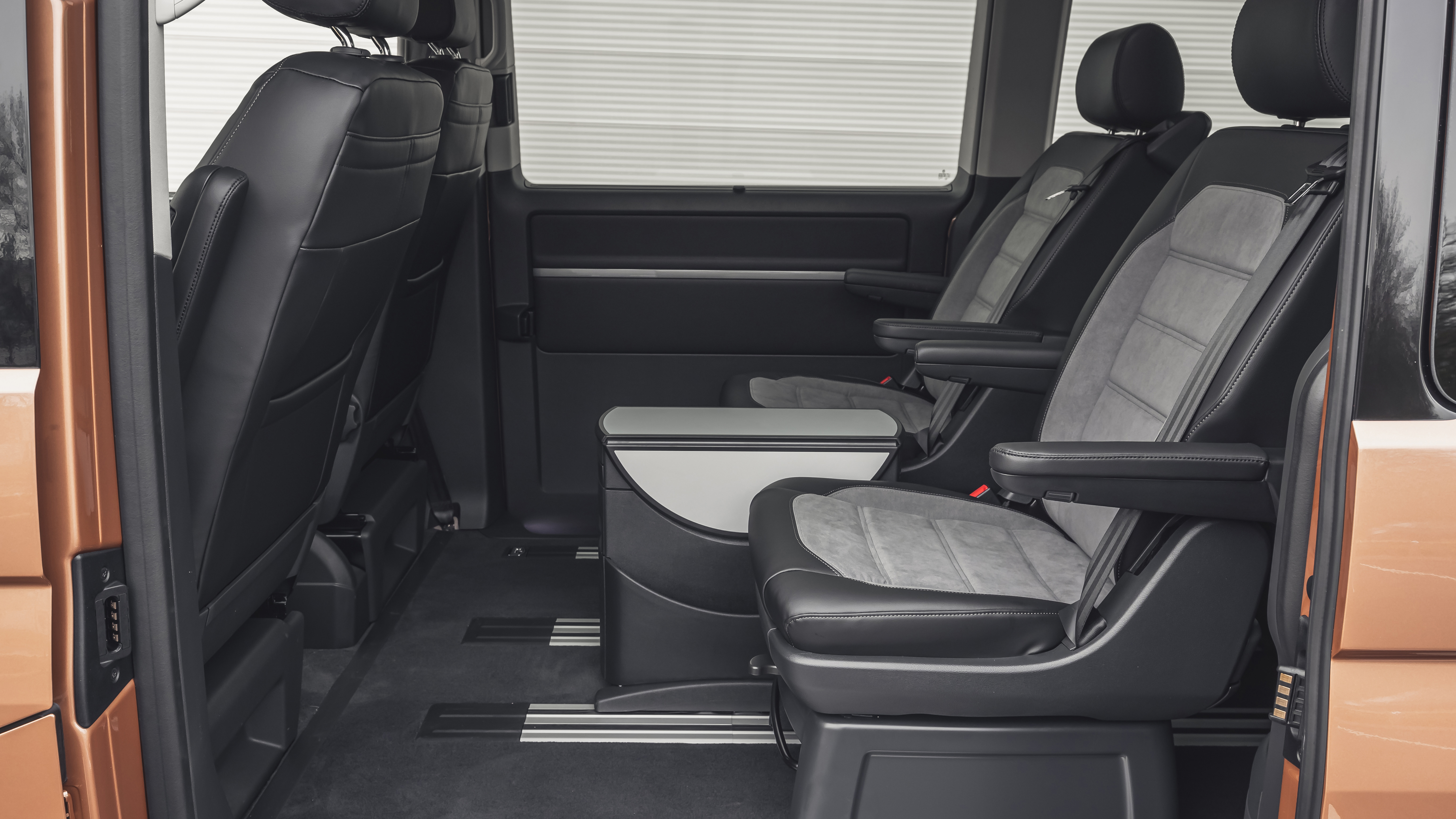
Buying
What should I be paying?
There are just two trims to choose from – SE or Executive. Then you can choose which of the two engines you want, whether you want front- or all-wheel drive, and finally whether you want a really long Caravelle or a really very long Caravelle. The van we tested, a front-wheel drive, standard-wheelbase Executive with the more powerful engine, costs £56K before options. And that’s a lot of money. Or maybe not, if you think about what you’d have to pay for a similarly-specified, similarly-practical family SUV. Even the cheapest Land Rover Discovery costs £48K.
Standard kit is good, meaning you won’t need to spend too much on options. SE gets adaptive cruise control, all those posh seats, touchscreen infotainment and automatic air conditioning. Upgrade to Executive (which the important business people we mentioned earlier might want to. Yes, you can get it in black), and you add three-zone climate control, LED headlights, the fancy infotainment system and various bits of fancy trim.
VW claims 34mpg for the twin-turbo diesel, and in our experience that’s about right. You might even see 40mpg on a longer motorway run, and with a 70-litre tank it’ll go for miles between fill-ups. Remember, you’ll need to top-up with AdBlue every few thousand miles to keep the emissions regulators happy – VW says the Caravelle should do around 4,000 miles between top-ups. CO2 emissions are 168g/km for the more powerful engine, and 166g/km for the less powerful one. Not bad.
The price difference between the two engines is just under £3K. While all-wheel drive adds another £3,500 or so.
Your warranty is three years or 100,000 miles, and you get three years of VW breakdown cover thrown in too.
Featured

Trending this week
- Car Review
BMW 1 Series
- Top Gear's Top 9
Nine dreadful bits of 'homeware' made by carmakers






